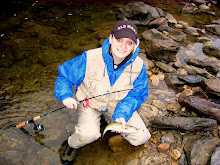1. What is the title of the project?
"parents and web enhanced afterschool program"
2. What is the problem?
In this action research, the teacher wants to see the difference in mathematical achievement scores when fifth grade students and their parents interact in an after school web-enhanced tutorial program. Several fifth grade, low achieving math students only become engaged in learning mathematical skills and strategies while using computer based tutorial programs with limited adult guidance.
3. Describe the instructional intervention.
web-based practice to enhance important mathematical skills
4. What kind of strategy is the instructional intervention?
This type of instructional intervention would be considered a "homework and practice" strategy. The students are participating in a computer-based program in which they receive practice for math skills. Parents are encouraged to support the students' participation of this practice time at home.
5. What evidence is presented that the strategy will work?
1-Mastery requires focused practice over days or weeks. After only four practice sessions students reach a halfway point to mastery. It takes more than 24 more practice sessions before students reach 80 percent mastery. And this practice must occur over a span of days or weeks, and cannot be rushed (Anderson, 1995; Newell & Rosenbloom, 1981).
2-Teachers in the United States tend to compress many skills into practice sessions and instructional units. Students learn more when allowed to practice fewer skills or concepts, but at a deeper level (Healy, 1990).
3-Appropriate parental involvement facilitates homework completion.
6. How will data be collected to determine if the strategy will work?
Data collection was based on the students’ scores achieved on their quarterly math grades.This was done by analyzing their Quarterly grade level math test, and their FCAT (Florida Comprehensive Achievement Test) scores in mathematics. The Quarterly grade level math test is administered at the beginning of every nine weeks to give the district and the classroom teacher an indicator of students’ improvement in math skills and the use of math strategies. The FCAT is a test used to assess the achievement of the students within each school district and across the state of Florida. The web-based tutorial began for only a brief period before the FCAT, but it will be interested to note any increase in the math scores for the targeted students.
7. How was the data analyzed?
In the analysis of the data, the teacher examined how similar the web-based tutorials were to the exercises used in the classroom. The ease of use was also considered by the students as well as the parents. Parents sent information on how the students performed on their math home learning assignments. The teacher also took a survey of her students to determine that the students were very aware of their difficulties in mathematics and seemed receptive to the implementation to this instructional intervention.
8. What were the results?
Overall, there were improvement of each student’s math scores. Overall there was an average gain of about 9.2% for the students’ fourth grading period math scores.
A Bit of an Introduction
Welcome to my Instructional Technology Blog! This particular blog was initialized as a requirement of my EDUC2201 course. I'm very new to the concept of blogging, so I am looking forward to all that I will learn throughout this semester. I'm currently an Elementary Education major; however, I would ultimately like to teach education courses on a collegiate level. Whether I end up in an elementary or college class, I will need to have a good grasp on the technology available to me as an educator. I hope to gain that necessary knowledge from this course so that I will be more readily able to offer my students helpful technological tools to enhance their learning.
Subscribe to:
Post Comments (Atom)

No comments:
Post a Comment